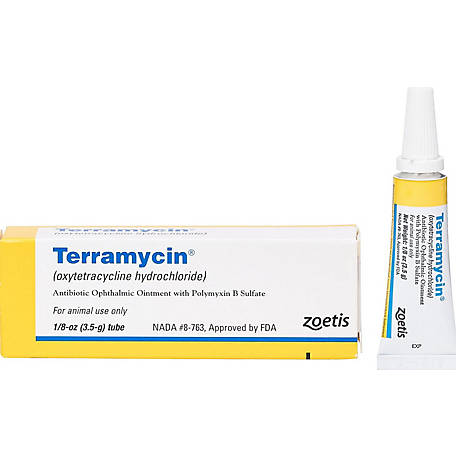Same as humans, dogs are also sensitive to eye infections. No matter what is the cause of eye infection in your pet, it is really uncomfortable and painful. Most pet owners seek for home remedies to treat the disease. If you are also wondering how to treat dog eye infections at home, you are on the right pace. Before diving deep into the question, we will first discuss the causes and symptoms of eye infections in dogs.
Related Topics You Might Like
Ointment for Eye Infection Treatment

Eye Drops for Dogs

"(Paid Links)" 

Causes of eyes infections in dogs
If your dog's eye discharge is clear, it's most likely due to allergies or something physical, such as dust in the eye or wind in the face. A foreign body, such as an eyelash, can cause a watery discharge or mucus from one eye.
In contrast, a yellow-green or pus-like discharge can indicate a severe infection. Always consult your veterinarian to determine the reason for your dog's eye discharge, as some issues can lead to blindness or the loss of an eye if left untreated.
some other causes of dog eye infections are:
Symptoms of Eye-Infections in Dogs
If your dog has any of the following symptoms below. In that case, it is critical that you take your pup for a veterinary examination. Infections in the eyes require treatment and, if left untreated, can become severe.

The following are symptoms of a dog's eye infection:

How to Treat Eye Infections At Home
Some home cures like non-medicated sterile saline rinses can help flush the eyes if your dog has an eye infection, but they're only a temporary fix. If you only have a little clear discharge and some redness, saline rinses are a good suggestion.
Some home-made treatments to cure eye infection

Keep your pet's eyes clean
Cleaning the area around your dog's eyes if there is a buildup of discharge will aid in healing. Wipe the area gently with a clean, soft cloth dampened only with warm water. You should not use peroxide, chemicals, or human makeup removal pads. Do not make contact with their eyeball.
Contact your veterinarian if the discharge is difficult to remove or if there is debris in their eye. There could be some complex variables to consider.
Make use of the cone
Your doctor may recommend that your dog wear a cone while receiving treatment for their eye problems. A cone can assist in ensuring that the treatment has the best chance of working and that your dog's eye is not further damaged. If your dog has problems adjusting to the cone, consult with your veterinarian for advice or other options before removing it.

Lukewarm water with salt.
If that's the case, start by combining lukewarm water with a half teaspoon of salt, as long as your veterinarian approves. Then, gently squirt it into your dog's eyes and wipe away any excess with a clean cotton pad. You can also use sterile plain saline eyewashes from a human pharmacy.
Compressing with warm clothe
To help alleviate swelling, apply mild pressure to your pet's eye with a warm washcloth for 5-10 minutes. Apply the washcloth to the inside of your wrist first to ensure it is not too hot.
BENADRYL
Finally, if you suspect it's an allergic reaction, a tiny dose of Benadryl can help alleviate swelling and itching. Ensure to call your vet and discuss your dog's breed and weight to avoid overdoing the medication.

When to call the doctor
Corneal ulcer is a severe type of eye infection in dogs. Surgery, antibiotics, or anti-inflammatories may be required for its treatment. Seek medical help for your pet as soon as possible.

